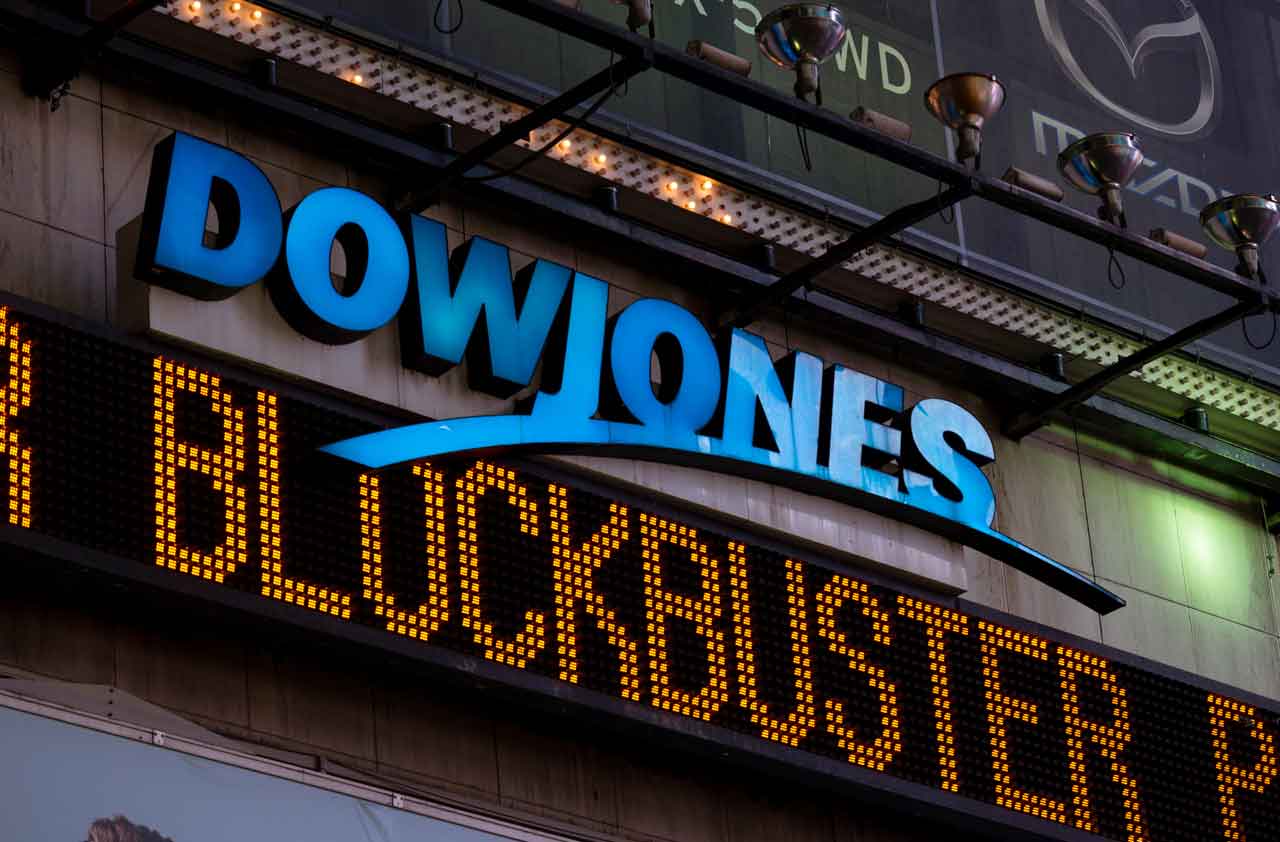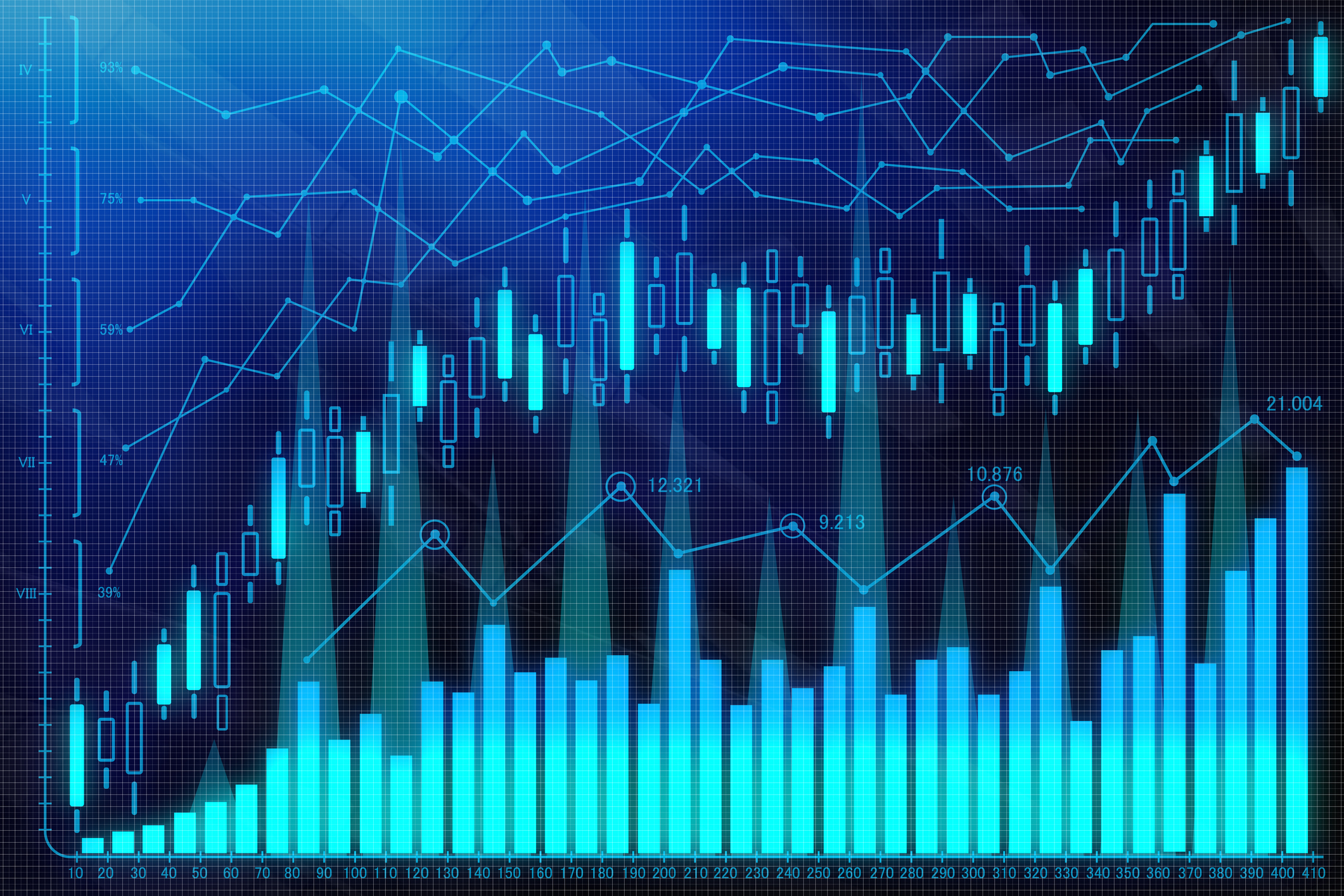10 Best Dividend Stocks in the Dow Averages
It’s been a strange year for high-yielding stocks.


It’s been a strange year for high-yielding stocks. In the first half of 2016, the Dow Jones utility average, a proxy for hefty dividend payers, was a market leader, rising 26%. Since then, however, it has tumbled 6%. And it has been a notable laggard during the post-election rally, falling 1% since November 8, while the broad market, as measured by Standard & Poor’s 500-stock index, advanced 6%.
What’s a yield-seeking investor to think now, with a lot of hot money chasing stocks that should benefit from rising rates (such as financials) and faster economic growth (such as industrial manufacturers and producers of steel, copper and other materials)?
Portfolio managers suggest that in this environment it makes sense to invest in companies that should deliver both above-average dividend growth and above-average earnings. We analyzed the 65 stocks in the Dow Jones industrial, transportation and utility averages and came up with 10 that meet those criteria and should provide investors with solid returns. We focused on this universe because inclusion in one of the Dow averages is a testament to a company’s size and financial strength. The market capitalization of the smallest company on our list is $55.7 billion.
The stocks have an average yield of 2.7%, and all but one yield more than the average 2.1% yield of the S&P 500 index.
Our picks are listed in descending order of their dividend yield. All figures are as of December 20. Revenues are for the past 12 months. Price-earnings ratios are based on estimated year-ahead earnings, starting with the current quarter.

Chevron
- Symbol: CVX
- Price: $117.95
- Market capitalization: $222.9 billion
- Annual revenues: $112 billion
- Estimated 2017 earnings growth: 313%
- Price-earnings ratio: 23
- Dividend yield: 3.7%
If you’re bullish on oil prices, Chevron is attractive, says Paul Franzen, a senior analyst with the Commerce Value Fund. And it looks much more appealing than ExxonMobil (XOM), the world’s biggest publicly traded energy company and also a member of the Dow Jones industrials.
Chevron should see annual production of oil and gas rise by 5% over the next three years, compared with 1% per year for Exxon. In addition, Exxon has a lot of exposure to refining and chemicals, which Chevron does not. That would be a relative plus for Chevron because rising crude prices pressure refining and chemical profits.
Chevron has a number of assets that should deliver solid returns with oil prices back in the $50-a-barrel area and perhaps heading higher. One particularly attractive holding is the roughly 2 million acres it owns in the Permian Basin in Texas and New Mexico, the second-largest oil field in the world. Analyst Pavel Molchanov of Raymond James thinks this holding could be worth $30 billion, or about 14% of the company’s market cap.
Beyond the Permian Basin, one of Chevron’s two huge liquefied natural gas facilities in Australia just went online, and the other one will go online soon. Another advantage for Chevron is that a relatively small amount of its assets are in global hot spots or politically unattractive locations. For instance, only 2% of its reserves are in the Middle East (compared with 13% for its competitors, other enormous multinational energy companies), and none are in Russia (compared with 12% for its rivals).
Don’t put too much stock in the 313% earnings growth that analysts expect Chevron to deliver next year. The figure is large because profits remained depressed in 2016 due to the recent crash in oil prices. By the same token, because of the profit slump, Chevron’s unappetizing price-earnings ratio is inflated by weak profits. Even during tough times, though, Chevron has been a generous dividend payer. It has boosted its payout by an average of 9% annually since 2005.
Ultimately, the price of oil will be the key driver of Chevron’s share price. Molchanov, who thinks oil will average $80 a barrel in 2017, compared with $52.40 today, says Chevron is more sensitive to crude prices than its main competitors. “It’s good to be oily,” he says.
See Also: 27 Best Stocks to Buy Now for 2017

Cisco Systems
- Symbol: CSCO
- Price: $30.56
- Market capitalization: $153.4 billion
- Annual revenues: $48.9 billion
- Estimated earnings growth in the fiscal year that ends in July 2017: 1.3%
- Price-earnings ratio: 13
- Dividend yield: 3.4%
The networking giant’s stock price is almost exactly where it was 10 years ago. Growth remains sluggish, with revenues having climbed just 1% in the first quarter of fiscal 2017 (ending in October) over the same period a year earlier.
Tax cuts favored by President-elect Donald Trump, including a lower corporate tax rate and a cut in taxes on profits repatriated from outside the U.S., would help Cisco, but there are other reasons to like the stock. Cisco is beginning to emerge as a network-security powerhouse. That business generated $2 billion in revenues in fiscal 2017, and security revenues rose 11% in the August-October quarter. Granted, many old tech companies, such as Microsoft (MSFT), are heralding their security chops, but Cisco’s annual haul is already bigger than that of Palo Alto Networks (PANW), the leading standalone security firm.
In the switching and router markets, meanwhile, Cisco is fighting against companies making hot new machines and others just trying to replicate Cisco’s offerings at a lower price. Cisco’s solution? It is trying to bundle software with its hardware and convince customers to pay for the software via an annual subscription payment. Overall, subscription revenues grew by 33% in the fiscal year that ended in July 2016, and Cisco now derives half of its security revenues from software or by subscription (the rest is from hardware sales). “The strategy is working,” says Jennifer Chang, manager of the Cullen High Dividend Equity Fund.
Chang thinks the company can deliver mid- to high-single-digit earnings growth over the next three to five years. “The dividend can grow even faster,” she says. In fact, Cisco in February raised its quarterly payout by an eye-popping 24%. And the stock looks cheap, selling for 30% less than the S&P 500’s P/E of 17.

NextEra Energy
- Symbol: NEE
- Price: $119.30
- Market capitalization: $55.7 billion
- Annual revenues: $16.5 billion
- Estimated 2017 earnings growth: 5.8%
- Price-earnings ratio: 19
- Dividend yield: 2.9%
Some people might think the election results precipitated a perfect storm for NextEra Energy. As a member of the Dow utility average, not only is the stock sensitive to interest rates—which have been rising since Election Day—the company is also the utility sector’s renewable-energy leader. And Trump seems to favor fossil fuels much more than renewable energy sources, such as wind and solar.
NextEra’s stock has fallen nearly 4%% since the election. But that may not be just an overreaction; instead, it may be a move in the wrong direction. Many of the tax credits that the company—and its customers—get for solar and wind projects will last through the end of 2019, then start to phase out, eventually disappearing at the end of 2022. And many wind and solar projects make economic sense without any tax credits at all.
In addition to serving fast-growing Florida, NextEra has grown by signing 20-year energy deals with industrial clients such as General Electric (GE). Many more agreements should follow. The company expects its earnings per share to rise by 6% to 8% a year through 2018, with dividends growing considerably faster, at an annual rate of 12% to 14%.
See Also: 8 Great Dividend-Paying Stocks in the Russell 2000 Index

Johnson & Johnson
- Symbol: JNJ
- Price: $115.66
- Market capitalization: $314.6 billion
- Annual revenues: $71.6 billion
- Estimated 2017 earnings growth: 5.2%
- Price-earnings ratio: 17
- Dividend yield: 2.8%
If you’re worried that drug prices might be subject to government price controls but still want to own a large pharmaceutical company, you’ll be hard-pressed to find a better choice than Johnson & Johnson. That’s because in J&J’s most recently reported quarter (July-September), the company derived only 47% of its sales from drugs. Medical devices accounted for 35%, and consumer products, such as Band-Aids, Listerine and Tylenol, were responsible for the rest.
And if you are looking for dividend growth and dependability, you need look no further. J&J has increased its annual payout for 53 consecutive years. A tax cut on repatriated earnings might help boost the payout further, given that almost all of the more than $40 billion in cash and securities on J&J’s balance sheet is held overseas.
With revenues and earnings expected to grow at a mid-single-digit rate over the next few years, it is reasonable to expect annual dividend growth of 6% to 8%. J&J has achieved $1 billion in productivity gains over the past three years. And in January, it announced that it would eliminate 3,000—or 6%—of the jobs in its medical-devices division.
Bears worry about the loss of J&J’s patent for the company’s top-selling drug, Remicade, a rheumatoid arthritis treatment that generates $6.6 billion in annual sales. After a judge invalidated the patent in August, Pfizer introduced a rival drug (called a biosimilar because it is made from biological components) in November. But Pfizer priced the drug only 15% lower than Remicade, less of a discount than investors initially feared. And J&J says that it has positioned itself to withstand the assault, noting that patients with commercial insurance pay just $5 per dose with a Remicade co-pay card (a discount card issued by the drug’s manufacturer) and that 48% of Remicade patients with commercial insurance have no co-pay whatsoever.
Analysts say J&J has a strong pipeline of drugs in development, so the company, which was founded 130 years ago, may have another century or two of growth ahead of it. And, who knows, it might raise its dividend annually for the next 53 years as well.

United Parcel Service
- Symbol: UPS
- Price: $117.52
- Market capitalization: $81.0 billion
- Annual revenues: $60.0 billion
- Estimated 2017 earnings growth: 5.2%
- Price-earnings ratio: 19.6
- Dividend yield: 2.7%
Known as Brown, for the color of its ubiquitous trucks and the uniforms of their drivers, UPS is a powerhouse not just in the U.S. Only three companies move packages internationally—FedEx (FDX) and DHL are the others—and UPS is by far the most efficient. Plus, overseas revenues are growing faster than in the U.S. From 2016 to 2019, the company expects revenues in the U.S. to rise by 5% to 6% a year, compared with international revenue growth of 6% to 9% annually. It expects earnings to increase by 9% to 13% annually.
Another plus for UPS: It pays a high federal corporate tax rate of 34% to 36%, so it could benefit from tax reform. “It is one of the reasons you could see profit-margin expansion,” says Matt Moulis, manager of the Fidelity Select Transportation Fund, which has UPS as its second-largest holding. Moreover, he says, “a significant portion of the business is recurring, including the shipment of staples and holiday gifts.”
Since going public in 1999, UPS, a member of the Dow transportation average, has lifted its dividend at a 10% annual pace. Expect that to continue.But what about future competition from Amazon, which has been buying cargo planes of late? So far, it seems the e-commerce giant is simply trying to find a way to make on-time deliveries at peak gift-giving times. Still, e-commerce now accounts for more than 40% of UPS business, and investors have to be alert to changes afoot at Amazon. But UPS has shown it can be flexible. To execute “not-at-home” deliveries, it has created 27,000 worldwide access points where customers can pick up their packages.

Microsoft
- Symbol: MSFT
- Price: $63.54
- Market capitalization: $494.3 billion
- Annual revenues: $85.4 billion
- Estimated 2017 earnings growth in the fiscal year that ends in June 2017: 1.1%
- Price-earnings ratio: 22
- Dividend yield: 2.5%
At Microsoft’s last shareholders meeting, in November, CEO Satya Nadella said that by 2025 the world will produce 180 zettabytes of data. (A zettabyte is sextillion bytes, or 10 to the 21st power bytes.) No wonder the world needs the cloud. And Microsoft’s mastery of the cloud is a big part of the company’s growth story. “Microsoft’s cloud is now competitive with Amazon Web Services,” says Ramona Persaud, manager of the Fidelity Dividend Growth Fund.
At the end of the fiscal year that ended June 30, Microsoft was generating cloud revenue at an annualized rate of more than $12 billion, an increase of slightly more than 50% from the previous year. Nadella says cloud revenue will reach $20 billion by the fiscal year that ends in June 2018. As the business expands, profit margins should improve.
Other parts of the business are also prospering and offsetting weak sales of operating systems and applications software for the stagnant personal computer market. Sales of the Surface tablet rose by 65% in fiscal 2016, to $3.6 billion; 49 million customers subscribe monthly to Xbox Live; and search engine Bing just became profitable. Analysts also think Microsoft will be able to find new sources of revenue from LinkedIn, the business- and employment-oriented social network that it recently purchased for $26 billion.
Analysts and fund managers are effusive in their praise for Nadella, who became CEO in 2014. “Nadella is very shareholder-friendly,” says Fidelity’s Persaud. And investors may soon realize just how friendly. Microsoft has $137 billion in cash and securities on its balance sheet, almost all of it held abroad. If the tax on repatriated earnings is reduced, Microsoft shareholders are likely to see more dividend increases and share buybacks.

United Technologies
- Symbol: UTX
- Price: $110.65
- Market capitalization: $91.1 billion
- Annual revenues: $57 billion
- Estimated 2017 earnings growth: -0.6%
- Price-earnings ratio: 17
- Dividend yield: 2.4%
If you screen for companies that are expected to generate superior earnings growth in 2017, you won’t find United Technologies. In fact, profits at the industrial conglomerate—which owns, among other things, aircraft-engine maker Pratt & Whitney, Otis Elevator and Carrier, the maker of heating and air-conditioning systems—are likely to be flat to down next year, with revenues climbing only modestly.
The culprit, says Don Taylor, manager of the Franklin Rising Dividend Fund, is Pratt & Whitney’s investment in its new PurePower Geared Turbofan jet engines, which reduce fuel use and ground noise in jetliners. The revolutionary jet engine burns 16% less fuel than conventional engines and reduces noise by 75%, while also significantly cutting carbon dioxide emissions. The company has invested about $10 billion in the new engines, and sales are just starting to ramp up.
United Technologies is well-positioned to benefit from the growth of commercial aviation all over the world. Increased defense spending during a Trump administration would also help. The company projects that Pratt & Whitney sales will rise at an annual rate of 10% or more from 2016 through 2020. And the company is optimistic about its other divisions as well. It sees annual sales gains of 5% to 7% in aerospace systems, 4% to 5% in climate controls and security (in addition to providing heating and cooling systems, the company is a key player in the creation of intelligent, energy-efficient buildings), and 4% to 5% for Otis elevators, escalators and moving walkways. If those growth targets are achieved, United Technologies should deliver double-digit earnings growth and raise its dividend by 8% to 9% a year starting in 2018.
United made headlines recently because of the deal its Carrier division struck with President-elect Trump and Vice President-elect Mike Pence, still Indiana’s governor, to keep some jobs at Carrier’s Indiana furnace plant. How this drama will play out for Carrier and the rest of United Technologies once Trump and Pence take office remains uncertain. In the meantime, investors can pick up this blue-chip industrial company, which will benefit from any pickup in global growth, at a reasonable price.

JP Morgan Chase
- Symbol: JPM
- Price: $86.53
- Market capitalization: $309.8 billion
- Annual revenues: $104.2 billion
- Estimated 2017 earnings growth: 9.8%
- Price-earnings ratio: 14
- Dividend yield: 2.2%
Like other financial stocks, JP Morgan has been on a tear since the election, rising 24%. But it may not be too late to hop aboard. The company should benefit from rising interest rates and less-demanding regulation, as well as faster economic growth, if that materializes. As its business has improved, the banking giant has been adding capital to its balance sheet. Each year, regulators have been allowing the bank to return more cash to shareholders, a trend that should continue, with a positive impact on dividends and stock buybacks.
If the corporate tax rate goes down to 20%, JP Morgan’s earnings, by one estimate, would rise by about 20%. And if the Federal Reserve does indeed raise short-term interest rates three times in 2017, as it recently suggested it would, that would also boost the bank’s earnings and, presumably, its stock price. More good news: CEO Jamie Dimon told the Wall Street Journal recently that JPMorgan’s bond-trading business has been much stronger lately. Bond-trading revenues have dropped 35% from their 2009 peak, and Dimon now thinks the company can recover half of that decline.
In evaluating JP Morgan, it’s important to recognize that European bank regulators have been tougher than their counterparts in the U.S. This has given JP Morgan a big edge over rivals such as Barclays (BCS) and Deutsche Bank (DB). Another positive that hasn’t shown up in earnings yet but may someday is the slew of dreadful headlines earned by competitor Wells Fargo (WFC). “JP Morgan is the best of the big banks,” says Commerce Value’s Franzen.

Union Pacific
- Symbol: UNP
- Price: $104.65
- Market capitalization: $86.2 billion
- Annual revenues: $20.0 billion
- Estimated 2017 earnings growth: 10.3%
- Price-earnings ratio: 19
- Dividend yield: 2.3%
Like other railroads, Union Pacific has had a grim 2016, a result of low energy prices. Industrywide, the number of carloads fell 6.9% in the first nine months of 2016 (compared with the first nine months of 2015), with coal and oil shipments leading the decline. Union Pacific stock is 15% off its record high, set in February 2015.Cheap energy prices have been hurting Union Pacific in two ways. Low prices led many power plants to shift to natural gas instead of coal. And low gasoline prices made truckers a more attractive alternative for the shipment of some goods.
But with the rise in the price of natural gas and oil, analysts have become more bullish on Union Pacific and, on average, are calling for a 10% earnings gain next year. And that estimate may be low if the economy turns out to be stronger than expected and oil prices rise further or even remain stable.
The company handled the downturn wisely, reducing capital expenditures in the face of declining demand. But UP continued to reward shareholders, raising its dividend by 10% and boosting its share repurchase plan. The company has bought back 305 million shares since 2007 at an average price of $59.63, well below the current level. Union Pacific’s high tax rate may also make it an attractive investment. Its 2015 tax rate was 37.7%, so it could see a significant earnings pop if corporate tax rates are reduced.
New federal regulations on truckers may also help the company. By the end of 2017, the nation’s truckers will have to install an electronic logging device that will monitor vehicle speeds and locations. That will make it much harder for a driver to spend more hours on the road in a day than regulations permit.

DuPont
- Symbol: DD
- Price: $75.26
- Market capitalization: $65.4 billion
- Annual revenues: $24.7 billion
- Estimated 2017 earnings growth: 13.4%
Price-earnings ratio: 21
Dividend yield: 2.0%
DuPont is not your grandfather’s chemical company. Today, 45% of its revenues come from agriculture, with another 10% from its electronics and communications division.
McKinsey & Company projects that crop demand for human consumption and animal feed will at least double by 2050. Given that 20% of what used to be farmland is no longer available for that purpose because of erosion and pollution, according to McKinsey, companies, such as DuPont, that improve agricultural efficiency will become increasingly valuable.
DuPont is also profiting from the trend toward healthier eating. It is a major player in nutritional additives, including vitamins. It is also helping dieters. When combined, two of its additives—Supro Soy Protein and Litesse dietary fiber—make consumers feel fuller for longer after a meal, thus reducing their cravings for more food. Meanwhile, the stock is actually cheaper than its P/E of 21 suggests. DuPont is scheduled to complete its merger with Dow Chemical (DOW) in the first quarter of 2017. If the two companies were combined today, they would have a blended P/E of 17 and a combined dividend yield of 2.6%. Moreover, in late 2018 or early 2019, the chemicals behemoth will become three separate public companies: One will focus on agriculture; the second, material sciences (among other things, this unit creates new materials, such as DuPont’s Kevlar bulletproof vests); and the third, specialty products in nutrition and electronics.
Bill Selesky, a senior analyst at Argus Research, is bullish on DuPont. He thinks the merger will help DuPont and Dow realize $3 billion in cost cuts and at least $1 billion in additional revenues. “The two companies are talking about raising the dividend,” he says, “and some major trends should help them. The world’s population will grow from 7.3 billion today to 9.7 billion by 2050, which should significantly benefit its huge agriculture business."
QUIZ: How Well Do You Know Dividends?
Profit and prosper with the best of Kiplinger's advice on investing, taxes, retirement, personal finance and much more. Delivered daily. Enter your email in the box and click Sign Me Up.

-
 I'm retired with $2.2 million saved and work 2 retail shifts a week for fun. My young colleague just got her hours cut, and I don't need the money. Should I quit so she can have my shifts?
I'm retired with $2.2 million saved and work 2 retail shifts a week for fun. My young colleague just got her hours cut, and I don't need the money. Should I quit so she can have my shifts?We asked certified financial planners for advice.
-
 Could an Annuity Be Your Retirement Safety Net?
Could an Annuity Be Your Retirement Safety Net?More people are considering annuities to achieve tax-deferred growth and guaranteed income, but deciding if they are right for you depends on these key factors.
-
 Older Taxpayers: Don't Miss This Hefty (Temporary) Tax Break
Older Taxpayers: Don't Miss This Hefty (Temporary) Tax BreakIf you're age 65 or older, you can claim a "bonus" tax deduction of up to $6,000 through 2028 that can be stacked on top of other deductions.
-
 JPMorgan's Drop Drags on the Dow: Stock Market Today
JPMorgan's Drop Drags on the Dow: Stock Market TodaySmall-cap stocks outperformed Tuesday on expectations that the Fed will cut interest rates on Wednesday.
-
 Stocks Slip to Start Fed Week: Stock Market Today
Stocks Slip to Start Fed Week: Stock Market TodayWhile a rate cut is widely expected this week, uncertainty is building around the Fed's future plans for monetary policy.
-
 Stocks Keep Climbing as Fed Meeting Nears: Stock Market Today
Stocks Keep Climbing as Fed Meeting Nears: Stock Market TodayA stale inflation report and improving consumer sentiment did little to shift expectations for a rate cut next week.
-
 Small Caps Hit a New High on Rate-Cut Hope: Stock Market Today
Small Caps Hit a New High on Rate-Cut Hope: Stock Market TodayOdds for a December rate cut remain high after the latest batch of jobs data, which helped the Russell 2000 outperform today.
-
 UNH Sparks a 408-Point Surge for the Dow: Stock Market Today
UNH Sparks a 408-Point Surge for the Dow: Stock Market TodayThe best available data right now confirm both a slowing employment market and a December rate cut, a tension reflected at the equity index level.
-
 Stocks Bounce Back With Tech-Led Gains: Stock Market Today
Stocks Bounce Back With Tech-Led Gains: Stock Market TodayEarnings and guidance from tech stocks and an old-school industrial lifted all three main U.S. equity indexes back into positive territory.
-
 Dow Slides 427 Points to Open December: Stock Market Today
Dow Slides 427 Points to Open December: Stock Market TodayThe final month of 2025 begins on a negative note after stocks ended November with a startling rally.
-
 What Fed Rate Cuts Mean For Fixed-Income Investors
What Fed Rate Cuts Mean For Fixed-Income InvestorsThe Fed's rate-cutting campaign has the fixed-income market set for an encore of Q4 2024.
